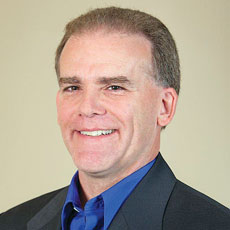
Editor’s Note: At the Long-Term and Post-Acute Care HIT Summit, nine industry leaders in health information technology discussed mobile solutions and industry trends. This roundtable discussion was sponsored byWoundRounds®, and VP Russell Cook compiled thoughts from the session. Part One appeared Tuesday.
Onboarding Users to Mobile
While there’s a whole generation of the workforce that grew up with mobile, that doesn’t mean every worker will embrace new technology. Steve Arndt, CIO of Shea Family Care, explains that willingness to change is more of a cultural mindset than related to the staff member’s age. “I tell the staff, ‘if you can text or do Facebook, then you can do this’ in regards to technology on the job.” In the bigger picture, Arndt suggests that long-term care facilities communicate that technology is the standard and expectation.
“We have to hire and train people who expect to do this in their jobs,” he said.
For some staff members, technology can feel like an electronic form of Big Brother watching over their shoulder. This fear of scrutiny can cause users to resist technology.
Dave Piehl, Administrator of Information Systems at Lutheran Senior Services suggests that workers need to see the benefits resulting from technology: “We show the staff the data and the care that’s being lost without technology. When they see how technology benefits residents, staff begins to get behind the change.”
Wayne Brannock, Vice President of Clinical Affairs for Lorien Health System, agrees, and shares his training tips. “First, train the trainer and let them see the benefit. They’ll share tips and successes with others in the organization.”
For inexperienced users, Brannock suggests another insight. “Show late adopters how to play Solitaire or email their family members. Once they’re comfortable with technology, it’s easier to convince them it will help make their work lives easier and benefit patient care,” he says.
Workforce IT Security
Lack of a standard mobile device represents new challenges in data security. Leonard shares that his organization requires employees to sign a waiver, essentially allowing the IT group to device management software that wipes the device if lost or stolen, requires strict password protocols, and blocks USBs to maintain security
Terry Leonard, CIO of Life Care Centers of America, explains his objective.
“It’s easier to manage the data center than all the end-point devices,” he says. “I tell users to bring in their device, sign the waiver to access centralized applications, and our team will manage its access.”
Life Care Centers of America uses Citrix as the security gateway for users to access the clinical and business intelligence applications explains Leonard.
Business Continuity – What if Wireless Goes Down?
With more and more computing going mobile, how do facilities protect against the wireless infrastructure going down, especially during severe weather? Redundancy is critical for Tutera Group. Becky LaBarge, VP of Clinical Reimbursement, along with IT vice president Ilene Shapiro, explain that they have dual ISP with cable and DSL. However, one of their locations in Hannibal, MO, had devastating storms that knocked out all cellular and cable connections in the town.
Leonard says they move servers when a hurricane is approaching. LaBarge says back-up generators provide redundancy as well. Arndt notes that Google Drive has a one-hour backup for EMRs and TARS, which backs up to the cloud and replicates machines.
Future Predictions of Mobile in LTC
HIT executives might not agree on which mobile devices are best, but they agree that mobile will continue to grow in importance and evolve the way we communicate and collaborate.
Participants predict that devices will become less expensive and smaller with touch-enabled screens.
Leonard thinks mobile will continually change the way LTC facilities communicate with staff, potentially replacing overhead paging.
“For our residents, our facilities are their homes. We don’t want to subject them to overhead paging like you experience in a hospital”, says Leonard. “Imagine if all your staff communication was issued to their mobile device. You could have everyone getting a message from the president at the same time.”
Remote consultations are another trend that will be driven by mobile devices. “We’ll likely conduct portable EKG on residents with real-time communication back to the cardiologists,” Leonard muses. “Imagine having real-time teleconferences between your staff and the remote cardiologists, aka real telemedicine improving the care in our facilities.”
The roundtable participants agree that it’s an exciting time for HIT, and the future of mobile solutions is likely to bring improved communication, wider collaboration and better care for our residents.
Russell Cook is the vice president of product development and chief architect at WoundRounds.




